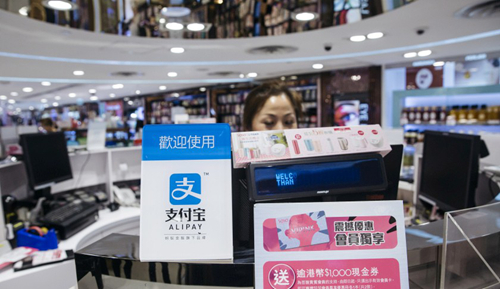服務(wù)業(yè)穩(wěn)步增長,,世界第二大經(jīng)濟(jì)體形勢企穩(wěn)

一項非官方調(diào)查顯示,隨著新業(yè)務(wù)量回升,,公司增加用工,,中國服務(wù)業(yè)在10月份實現(xiàn)4個月來最快增速。 該項調(diào)查結(jié)果加上本周早些時候官方公布樂觀的工廠和服務(wù)業(yè)數(shù)據(jù),,進(jìn)一步表明,,世界第二大經(jīng)濟(jì)體正在企穩(wěn)。 中國正越來越依賴服務(wù)業(yè)創(chuàng)造就業(yè)機(jī)會和推動經(jīng)濟(jì)增長,,而且希望將經(jīng)濟(jì)模式從傳統(tǒng)的投資和出口依賴轉(zhuǎn)向消費驅(qū)動,。 經(jīng)季節(jié)性調(diào)整后,財新/Markit服務(wù)業(yè)采購經(jīng)理人指數(shù)(PMI)從9月的52.0上升至10月的52.4,,為6月以來最高水平,。 該指數(shù)高于50表明行業(yè)正在擴(kuò)張。 服務(wù)業(yè)公司新工作量實現(xiàn)6月以來最快增速,,但增速仍然不高,。一些公司認(rèn)為出現(xiàn)改善跡象是因為基本市場條件改善和相關(guān)的需求上升。 積壓工作量也略有增加,,結(jié)束了連續(xù)四個月的輕微收縮勢頭,。一些公司稱,訂單的增加正在造成產(chǎn)能壓力,。 調(diào)查涉及的公司連續(xù)第二個月增加用工,,雖然增幅不大,但增速創(chuàng)1月以來新高,。 企業(yè)預(yù)期比上個月更積極,,但仍然略低于8月,當(dāng)時該預(yù)期達(dá)到6個月來高點,。 所有指標(biāo)均比上月有所改善,,但是服務(wù)收費除外,原因是競爭加劇和努力獲得新業(yè)務(wù)削弱了一些公司的定價能力,。大多數(shù)公司只能將10月份增加的投入成本中的一小部分予以轉(zhuǎn)嫁,。 財新綜合PMI(包括制造業(yè)和服務(wù)業(yè))從9月的51.4上升至52.9,創(chuàng)三年多以最快增速,。 經(jīng)濟(jì)學(xué)家們呼吁政府繼續(xù)給予政策支持,,保持增長勢頭。 財新智庫莫尼塔(CEBM Group)宏觀研究主管鐘正生表示:“四季度經(jīng)濟(jì)有望保持穩(wěn)定,,但在經(jīng)濟(jì)經(jīng)濟(jì)增長的內(nèi)生動力不足的背景下,,政策托底不能放松?!?/p> 中國官方服務(wù)業(yè)調(diào)查顯示10月份服務(wù)業(yè)增長強(qiáng)勁,,指數(shù)增長創(chuàng)2015年12月以來最快增速,。 制造業(yè)調(diào)查也顯示,受國內(nèi)需求改善和建設(shè)熱潮推動,,經(jīng)濟(jì)正在企穩(wěn),。 Markit是IHS Markit有限公司的注冊商標(biāo),主要調(diào)查對象是中小型企業(yè),,這些企業(yè)面臨的財務(wù)壓力大于大型國有企業(yè),。(財富中文網(wǎng)) 翻譯:Peter Pei 審校:夏林 | China’s services sector grew at the strongest pace in four months in October as new business picked up, encouraging companies to hire more workers, a private survey showed. The findings, along with upbeat official factory and services readings earlier this week, add to the view that the world’s second-largest economy is on a steadier footing. Beijing is increasingly counting on the services sector to create jobs and drive growth as it looks to shift its economic model more toward consumption from a traditional reliance on investment and exports. The Caixin/Markit services purchasing managers’ index (PMI) rose to 52.4 in October on a seasonally adjusted basis from 52.0 in September, posting the strongest reading since June. A reading above the 50-mark suggests expansion in activity on a monthly basis. Services companies saw the fastest growth in new work since June, though the pace was still modest. Some firms attributed the improvement to better underlying market conditions and an associated upturn in demand. Backlogs of work also increased slightly, ending a four-month sequence of marginal contractions, as some firms reported the increase in orders was creating capacity pressures. Companies in the survey added staff for the second month in a row, and at the fastest pace since January, though gains were moderate. Business expectations were more positive than the previous month, but still slightly below August when they hit a six-month high. All measures improved from the previous month except prices charged for services, as increased competition and efforts to attract new business have curbed the pricing power of some firms. Most companies were only able to pass along a small part of the increase seen in their input costs in October. Caixin’s composite PMI covering both the manufacturing and services sectors expanded at the fastest pace in over three years, rising to 52.9 from September’s 51.4. Economists called for continued government policy support to sustain the momentum. “It may be possible to sustain this stable condition throughout the fourth quarter, but it’s important that supportive policies are not relaxed because the economy still lacks sufficient growth momentum,” said Zhengsheng Zhong, director of macroeconomic analysis at CEBM Group. China’s official services survey showed robust growth in October, with the index rising at the fastest pace since December 2015. Manufacturing surveys also suggested the economy was stabilizing, thanks to improved domestic demand and a construction boom. The surveys by Markit, which is a registered trade mark of IHS Markit Limited, focus more on small and medium-sized firms, which have been facing greater financial strains than larger, state-owned companies. |













